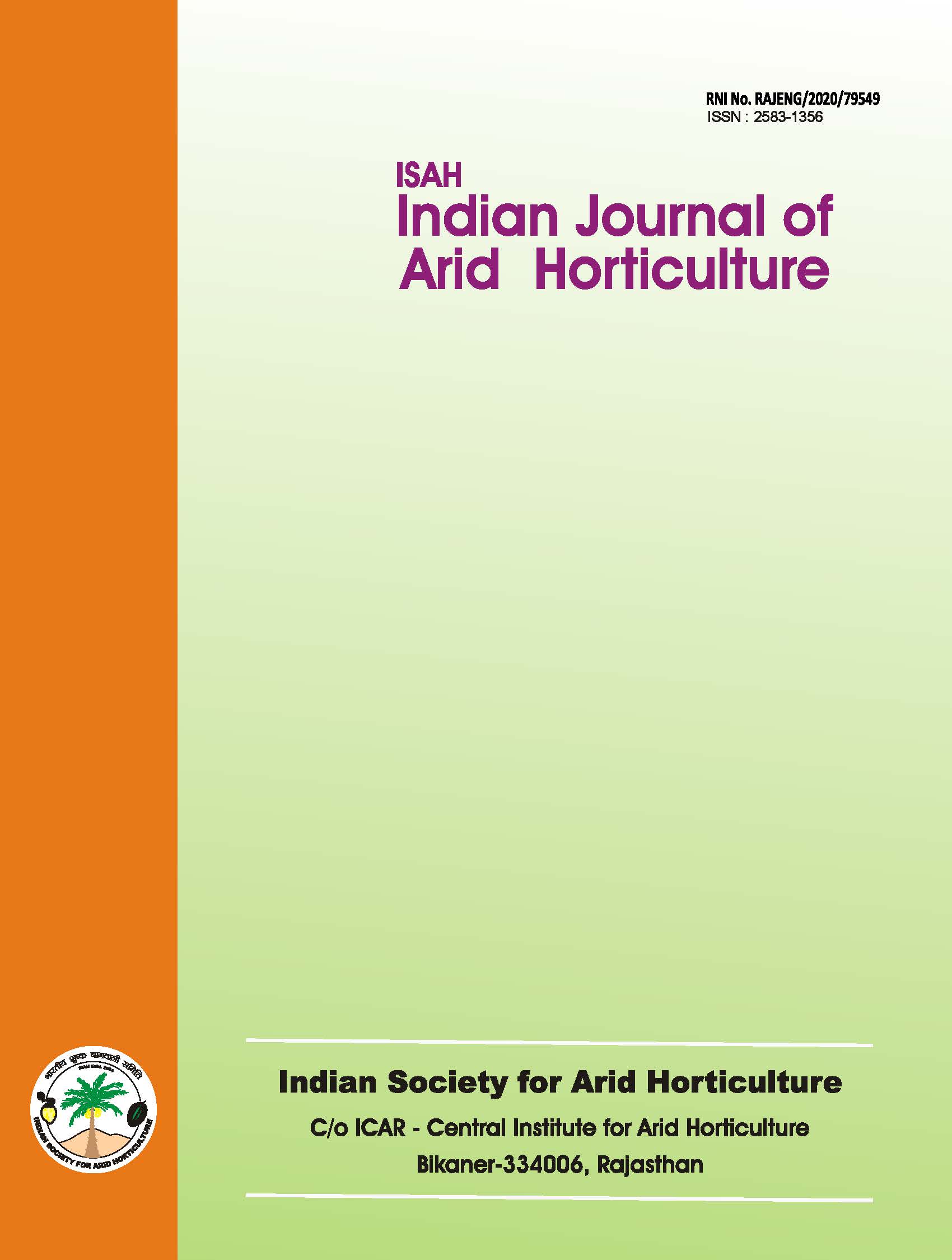Effect of plant growth substances on growth and flowering attributes of African marigold (Tagetes erecta Linn.)
Keywords:
ornamental, Compositeae, adaptabil, retention, transloca- tion, chlorophyllAbstract
Floriculture is now emerging as an important ven- ture in the world, especially as a potential money spinner. Many flowers and ornamental plants grown for domestic as well as for export market provide more returns per unit area than other horticultural crops. Marigold (Tagetes sp.) is on annual flowers to cultivate easily and have wide adaptabil- ity to different soil and climatic conditions. It belongs to family Compositeae and native of India. It has a great eco- nomic potential for loose flower trade. It is especially used for making garland, decoration and induced in landscape plans due to its variable height and colour. Marigolds have also great medicinal importance i.e. leaf extract is good rem- edy for ear-ache and flower extract is used as blood purifier and against bleeding piles. Besides, it is also found impor- tant in controlling nematodes because, it produce thiophenes, which are naturally occurring biocides. Appli- cation of plant growth substances showed tremendous potential in modulating growth and related processes. They are considered bio-soft wards, which elicit rapid as well as long term responses in crop plants (Yadav et al., 1994 and Malik et al., 1996).Downloads
References
Chawla, H.S. 2009. Introduction to plant bio-technology. Published by oxford and IBH Publication Pvt. Ltd. New Delhi. pp.- 18-27. Choudhary, D.K. 2008. Effect of plant growth regulators on
growth, floral characters, vase life and corm pro- duction of gladiolus (Gladiolus grandiflorum L.). M.Sc. Thesis (Horticulture), submitted to Rajasthan Agricultural University, Bikaner Cam- pus-Jobner.
Kim, S.D., Kim, H.H., Lee, H.D., J. W. and Yun, T. 2003. Effect of growth regulators on occurrence of suckers, lat- eral shoot elongation and cut flower quality in sec- ondary flowering of Dendranthema grandiflorum 'Beagkwang'. Journal of the Korean Society of Horticultural Sciences, 44 (4): 335-538.
Kumar, P.S., Bhagawati, R., Kumar, R., and Ronya, T, 2008. Effect of plant growth regulators on vegetative
growth, flowering and corm production of gladi- olus in Arunachal Pradesh. Journal of Ornamen- tal Horticulture, 11 (4): 265-270.
Malik,C.P., Sanjeev, K and Bhatia, D.S., 1996. Alternating plant archetypes with PGRS and genetic transfor- mation biological soft wards in agro biotechnol- ogy. Agro Annual Review of Plant Physiology, 2: 13-64. Mukhopadhyay, A. and Mukhopadhyay, A. 1990. Response of carnation to foliar application of NAA and gib- berellic acid. Haryana Journal of Horticultural Sciences, 19 (3-4): 280-283.
Panse, V.G. and Sukhatme, P.V. 1995. Statistical Methods for Agricultural Workers. ICAR, New Delhi. Pandey, S.N. and Sinha, B.K., 1984. Role of Auxin. Plant Physiology. Vikash Publishing House, New Delhi.
pp. 432-436.
Singh, A. K. 2003. Effect of plant bio-regulators on growth, biomass and flowering in French marigold (Tagetes petula). Indian Perfumer, 47 (3): 279-284. Singh, A.K. and Kumar, S. 2003. Effect of NAA on growth
and flowering in rose cv. Super Star. Journal of Ornamental Horticulture, 6(3): 248-251. Sonvir, S., Ramesh, K., Manreet, S., Sooch, S., Kumar, R., Sooch, M., Misra, R.L. and Sanyat, M. 2002. Effect of NAA and kinetin on plant growth and flower production in carnation. Floriculture Research Tend in India. in: Proceedings of the National Sympo- sium on Indian Floriculture in New Millennium held at Bangalore from 25-27 February, 295-297. Yadav, N., Yadav, N.K. and Kumar, A., 1994. Effect of BA on transpiration, water potential and its components in genotypes of wheat contrasting in drought tol- erance. Journal of Agronomy and Crop Science, 173:61-68.

